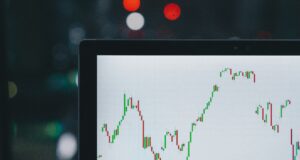Energy encyclopedia
This Encyclopedia is a dynamic and continually updated resource designed to provide accurate and comprehensive information about the energy sector. It caters to a diverse audience, including students, professionals, and anyone interested in energy-related topics. Our goal is to deliver reliable and informative content to all our readers 📘
A
Asset Management third-party
Asset management third-party refers to outsourcing of asset management services to a third-party provider. This provider is responsible for managing and optimizing customers' energy assets, such as power plants, renewable energy systems and storage systems, to help them maximize energy production, reducing costs and improving overall energy efficiency.
Asset management third-party services typically cover a variety of tasks, including performance monitoring, predictive maintenance, and performance optimization of assets to maximize their economic value. By outsourcing these tasks, energy and utility companies can focus on their core business while benefiting from the expertise and specialized tools provided by third-party provider.
The use of third-party asset management services is becoming increasingly common in the energy industry, especially as more companies look to optimize their energy assets and reduce costs. By partnering with trusted third-party provider, energy companies can leverage the latest technology and analytics tools to make data-driven decisions and improve the performance of their energy production.
B
Battery Energy Storage System (BESS)
Battery Energy Storage Systems, also called BESS, is a technological solution that helps to balance the electricity grid in real-time. Electricity flows on the grid may fluctuate due to various reasons, such as weather, power station outages, congestion on the grid, or geopolitical reasons.

Blockchain
Blockchain technology has the potential to improve the energy industry by increasing transparency, security, and efficiency through peer-to-peer energy trading and tracking the origin of renewable energy. The TEO - The Energy Origin platform uses blockchain to track and verify the generation of renewable energy, allowing consumers to know that the energy they are using is truly clean and renewable.

C
Commodity
Commodities represent a significant portion of the energy sector's production costs. Market volatility means that financial risks must be kept under control at all times, while guaranteeing reliable supplies. This requires high-level expertise and constant monitoring of all the factors influencing prices. ENGIE International Supply & Energy Management, a major player in the energy sector, is constantly involved in securing the supply of commodities.

Corporate Renewable Energy Supply Scheme (CRESS)
The Corporate Renewable Energy Supply Scheme (CRESS) is an initiative in Malaysia launched by the Ministry of Energy Transition and Water Transformation providing greater and easier access to renewable electricity. Combining solar production and battery storage allows for more consistency, flexibility in energy source choice and cost-competitiveness, creating opportunities for more energy-intensive investments such as data centres.

D
Demand Side Management (DSM)
In order to optimize the overall energy system, Demand Side Management (DSM) is a method used to manage and control client-side electricity consumption.
DSM strategies involve electricity usage patterns based on price signals or grid conditions. For example, clients may reduce their electricity consumption during specific hours or shift usage to off-peak times in response to high energy prices or grid instability. This can result in significant cost savings and help to stabilize the grid by reducing the need for expensive peak-demand power sources.
DSM is predicted to become more crucial in managing energy demand and lowering emissions as the world moves toward a more sustainable energy future. Demand Side Management can help to maximize the efficiency of the energy system, reduce energy waste, and promote a more sustainable and resilient grid.
E
Energy attributes certificates
Renewable energy is a crucial part of the energy transition and achieving a sustainable future. As companies look for ways to support and promote clean energy, renewable energy attribute certificates, also known as Power Guarantees of Origin (GoOs) in Europe, have emerged as an important tool for incentivizing and tracking the growth of renewable energy assets.

Energy Certificates
Energy certificates are tradable certificates that guarantee that a certain amount of energy has been produced from renewable sources. They are issued when renewable energy producers inject their electricity into the grid. These can then be sold to energy suppliers or other entities that need to achieve renewable energy targets. These certificates are generally used to promote the use of clean energy sources and support the development of renewable energy projects.
Energy certificates help to create a market for renewable energies by providing a financial incentive for the production of green energy. As a result, the certificates contribute to the transition to a more sustainable energy system. They can also assist companies in meeting regulatory requirements related to renewable energy and demonstrate their commitment to reducing their carbon footprint.
Energy Imbalance
The term "energy imbalance" refers to the difference in the quantity of energy planned for delivery and the actual quantity of energy delivered within a designated timeframe. Numerous factors, such as sudden changes in energy demand, fluctuations in energy supply, and unexpected changes in weather conditions, can contribute to this imbalance.
Energy imbalance can cause a range of issues, such as power outages, brownouts, and reduced grid stability. Energy management systems use advanced algorithms and technologies to monitor energy demand and supply in real-time and adjust energy production and distribution to suit changing conditions in order to reduce these problems. By managing energy imbalances, energy management systems can improve grid stability, reduce the risk of power outages, and ensure reliable and efficient delivery of energy to consumers.
Energy Intelligence
Energy intelligence has become a key priority – there can be no optimization, whether financial or operational, without good data management. Although data is becoming increasingly abundant and complex, with more sources than ever before, only effective selection data selection and analysis can generate real added value. ENGIE occupies a key position in this specialty area.

European Emissions Trading System (EU ETS)
Established in 2005 by the European Union (EU) with a strong focus on reducing greenhouse gas emissions and achieving an impressive reduction target of -55% by 2030 compared to 1990 levels, the European Emissions Trading System (EU ETS) emerges as a cornerstone of Europe's strategy for mitigating climate change.

European Energy Exchange (EEX)
The European Energy Exchange (EEX) is a top energy exchange that operates across several European countries and provides a trading platform for energy and related products. Founded in Leipzig, Germany, in 2002, EEX now includes operations in Austria, France, Italy, the Netherlands, Poland, and Switzerland.
EEX facilitate trade in a wide range of energy products, including electricity, natural gas, coal and carbon credits. Additionally, the exchange offers clearing and derivatives services, giving market participants a variety of tools to manage their energy risk exposure. EEX's markets are regulated by various European supervisory authorities, and the exchange is committed to ensuring transparency and fair trading practices.
Exchanges play an important role in the energy sector, providing an efficient and transparent platform for market participants to buy and sell energy products, manage their risks and ultimately contribute to a more sustainable energy future.
F
Flexibility
There isn't just one type of flexibility. To balance the flow of energy in the power grid, solutions need to be protean. They must also be scalable. Here is an overview of a strategic activity for ENGIE, a major player in the energy sector, whose teams contribute daily to balancing grids and optimizing resources.
H
L
M
Midstream
Midstream is used in the energy industry to describe the processing and transportation of electricity, natural gas, and other related products from production sites (upstream) to end-users (downstream). Midstream activities are essential in ensuring that the products are transported safely and efficiently while adhering to environmental and safety standards.
Midstream is a key part of the energy supply chain, connecting upstream producers with downstream clients. Midstream companies also play a role in supporting the growth of the energy industry by investing in new infrastructure, technology, and equipment.
As the world transitions to cleaner energy sources, midstream companies will continue to play a key role in supporting the transportation and storage of renewable gas such as biomethane and hydrogen.
P
R
Responsibly Sourced Gas
The ethical and sustainable acquisition of natural gas is referred to as Responsible Sourcing of Gas (RSG). This involves sourcing natural gas in a way that minimizes its ecological impact, protects the rights of workers and communities, and promotes good governance. Actions such as reducing greenhouse gas emissions, adopting renewable energy in production, and implementing stringent labor standards can be taken to ensure responsible sourcing.
As clients and stakeholders demand greater transparency from businesses, responsible sourcing is becoming more crucial in the energy industry. Additionally, responsible sourcing can enable companies to regulatory requirements and access new markets where responsible sourcing is a priority.
S
T
Traceability models
As a business, it can be a challenge to track the journey of a product from start to finish. Supply chain transparency can be lacking in certain areas and tracing a product's physical properties can add further complexity. Understanding traceability is important for creating a more transparent supply chain and ensuring that products are ethically and sustainably sourced.

















